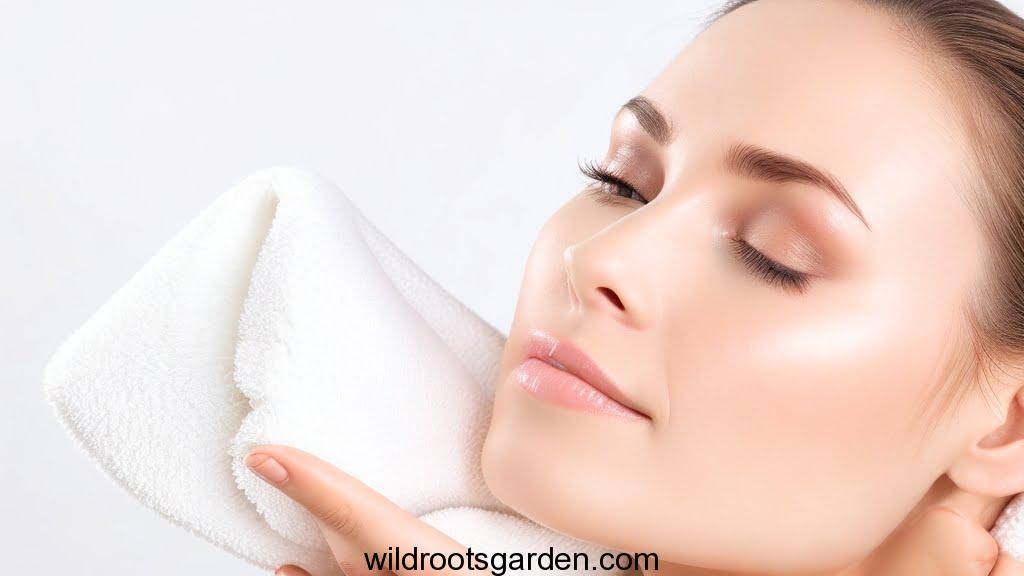Although Aloe Vera contains some naturally occurring sun protection qualities, it’s crucial to remember that by itself, it might not be enough to shield you from dangerous UV rays. The normal sun protection factor (SPF) of aloe vera gel is between 1 and 2, which is insufficient for prolonged sun exposure.
However, Aloe Vera gel can still be beneficial when used in conjunction with proper sunscreen. Here’s how you can incorporate Aloe Vera gel into your sun protection routine.
While aloe vera gel can soothe damaged skin and aid in hydrating, it should not be used exclusively as a replacement for a reliable sunscreen. Prioritizing proper sun protection is crucial. To do this, use a broad-spectrum sunscreen and adhere to other sun safety recommendations including finding shade, donning sun protection gear, and wearing sunglasses.

1. Introduction
Sun protection is essential for preserving healthy skin and lowering the risk of skin cancer, sunburns, and early aging. Although conventional sunscreen creams are easily accessible, a growing number of people are now choosing natural alternatives. Due to its possible sun protection qualities, aloe vera gel, which is made from the succulent plant Aloe vera, has become increasingly popular. In this post, we’ll examine the advantages of aloe vera gel for the skin and how it can be used as a sunscreen.
2. The Importance of Sunscreen
It’s important to comprehend why sunscreen is so important for our skin before learning more about aloe vera gel’s potential for sun protection. The sun’s harmful ultraviolet (UV) rays, primarily UVA and UVB, can damage the skin because they can permeate it. Without protection, prolonged exposure to UV radiation increases the risk of developing skin cancer, sunburn, and aging of the skin. Sunscreen functions as a barrier that prevents UV radiation from penetrating the skin and causing damage.
3. What Is Aloe Vera Gel?
Aloe vera gel is a viscous, gel-like substance that is extracted from the leaves of the Aloe vera plant. It has been used for centuries in traditional medicine and skincare due to its soothing, moisturizing, and healing properties. Aloe vera gel is rich in vitamins, minerals, enzymes, and antioxidants, making it a popular ingredient in various skincare products.

4. Aloe Vera Gel’s Sun Protection Properties
Aloe vera gel does provide some level of sun protection, but it cannot take the place of traditional sunscreen. Aloin and aloesin, two substances present in aloe vera, have been shown to absorb UV rays and offer some level of protection against sunburn. It’s crucial to remember that aloe vera gel alone has a low sun protection factor (SPF), often ranging from 1 to 4. For best results, it is advised to combine the usage of aloe vera gel with other sun protection techniques.
5. How to Use Aloe Vera Gel as Sunscreen
Using aloe vera gel as sunscreen is simple and can be incorporated into your daily skincare routine. Follow these steps for effective application:
Step 1: Choose a High-Quality Aloe Vera Gel
Ensure that you select a pure and organic aloe vera gel without added chemicals or fragrances. Look for a reputable brand that provides transparency about the sourcing and processing of their aloe vera gel.
Step 2: Perform a Patch Test
Do a patch test on a small area of your skin to check for any allergic reactions or skin sensitivities before putting aloe vera gel all over your face or body.

Step 3: Apply Generously and Evenly
Take a sufficient amount of aloe vera gel and apply it to exposed areas of the skin at least 15-20 minutes before sun exposure. Massage it gently until it gets absorbed, ensuring an even application.
Step 4: Reapply as Needed
Keep in mind to reapply aloe vera gel every two hours or more often if you perspire a lot or participate in aquatic sports. To maintain sun protection, reapplication is essential.
6. Benefits of Aloe Vera Gel as Sunscreen
Apart from its sun protection properties, aloe vera gel offers several benefits for the skin:
- Hydration: Aloe vera gel has excellent moisturizing properties, keeping the skin hydrated and preventing dryness caused by sun exposure.
- Soothing and Cooling: Aloe vera gel provides a soothing and cooling sensation on sun-damaged skin, alleviating the discomfort associated with sunburns.
- Anti-inflammatory Effects: The gel’s anti-inflammatory properties help reduce redness, inflammation, and irritation caused by UV radiation.
- Nourishment: Aloe vera gel contains essential vitamins and minerals that nourish the skin, promoting overall skin health and regeneration.
7. Precautions and Side Effects
While using aloe vera gel topically is generally regarded as harmless, some people may develop allergic reactions or skin sensitivities. Before using aloe vera gel as sunscreen, it is advised to conduct a patch test. See a dermatologist right away and stop using the product if any irritation or unfavorable responses happen. Aloe vera gel also shouldn’t be used as a substitute for sunscreen when exposed to the sun for an extended period of time or in areas with strong UV rays.

8. Choosing the Right Aloe Vera Gel
When selecting aloe vera gel for sun protection, consider the following factors:
- Purity: Look for pure aloe vera gel without additives or fillers for optimal benefits.
- Organic and Natural: Choose organic and naturally sourced aloe vera gel to minimize exposure to synthetic chemicals.
- Transparency: Select a brand that provides transparent information about the sourcing, processing, and quality control of their aloe vera gel products.
9. The Science Behind Aloe Vera Gel’s Sunscreen Benefits
The sun protection abilities of aloe vera gel have been the subject of numerous scientific investigations. According to research, the polysaccharides and flavonoids in the gel helps to absorb and scavenge UV light. To pinpoint the precise mechanisms and effectiveness of aloe vera gel as a stand-alone sunscreen, more research is necessary.
10. Frequently Asked Questions (FAQs)
Q1: Can aloe vera gel completely replace sunscreen? Aloe vera gel alone does not provide sufficient sun protection and should not be used as a replacement for sunscreen. It is best to use a broad-spectrum sunscreen with a high SPF in addition to aloe vera gel for adequate sun protection.
Q2: Can aloe vera gel be used on all skin types? Yes, aloe vera gel is generally suitable for all skin types. However, individuals with sensitive skin should perform a patch test before applying it to the entire face or body.
Q3: Can aloe vera gel be used on sunburned skin? Yes, aloe vera gel is highly effective in soothing sunburned skin. Its cooling properties provide relief from the burning sensation and help in the healing process.
Q4: Can aloe vera gel prevent skin aging? Aloe vera gel’s antioxidant properties can help combat free radicals and minimize skin damage caused by sun exposure, thus potentially slowing down the skin aging process.
Q5: Can aloe vera gel be used as an after-sun treatment? Absolutely! Aloe vera gel is an excellent after-sun treatment. Its moisturizing and soothing properties aid in the repair and rejuvenation of sun-damaged skin.
11. Conclusion
Aloe vera gel can be a valuable addition to your sun protection routine, offering natural hydration, soothing effects, and potential sun protection benefits. While it cannot replace traditional sunscreen, incorporating aloe vera gel alongside proper sun protection measures can contribute to healthier, more resilient skin. Remember to choose a high-quality aloe vera gel and reapply it regularly for optimal results.

